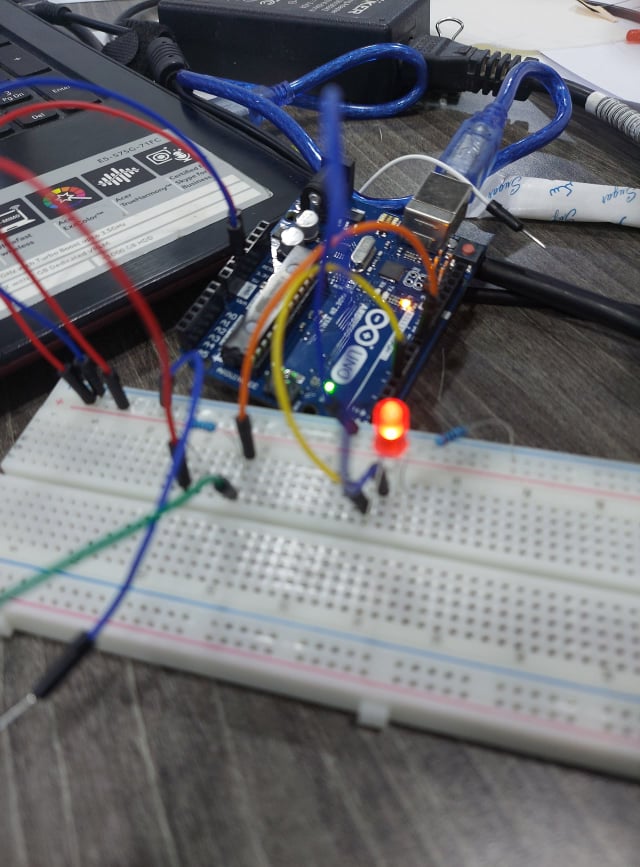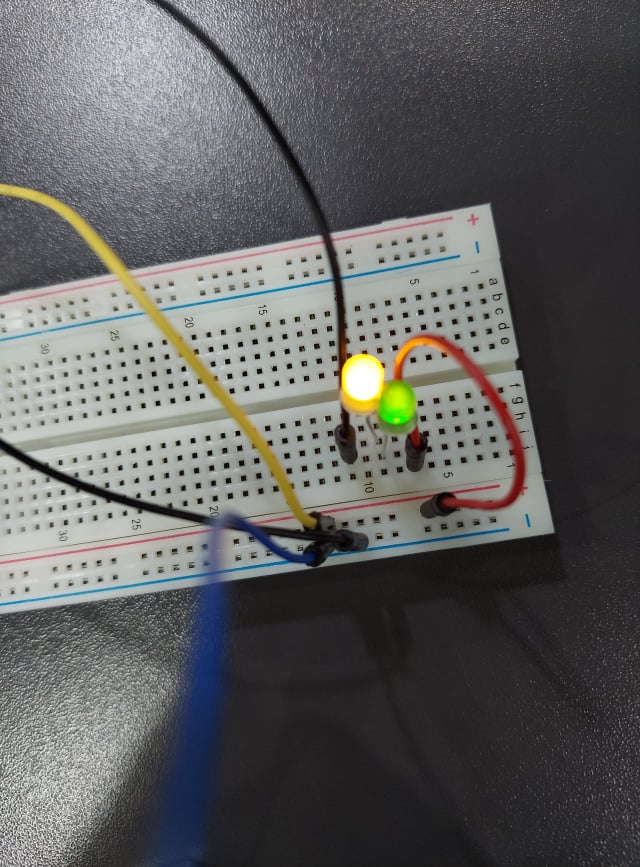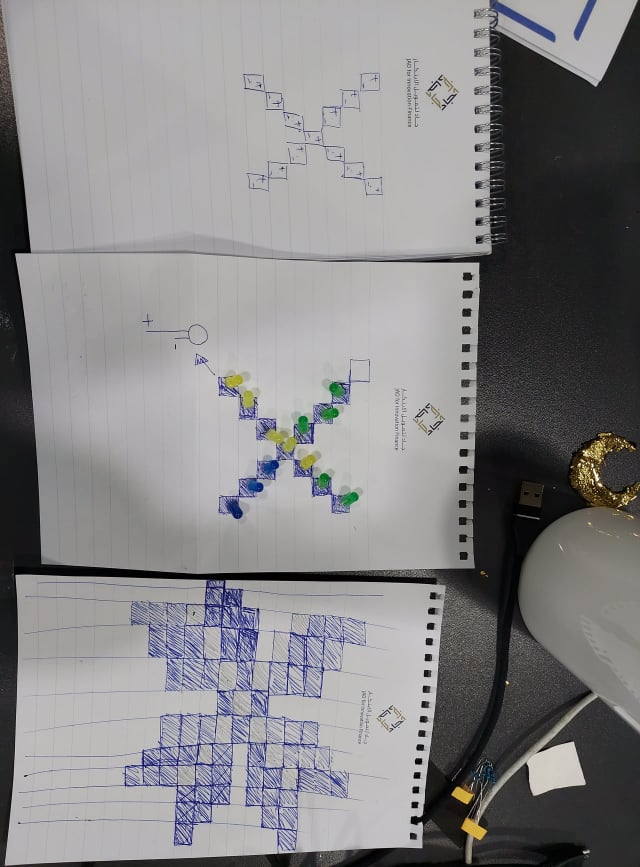5. E-Textiles¶
In the fifth week, we learned about the e_textiles . "Electronic textiles or e-textiles (often confounded with smart textiles) are fabrics that enable digital components such as a battery and a light (including small computers), and electronics to be embedded in them. "Smart textiles" are fabrics that have been developed with new technologies that provide added value to the wearer. Pailes-Friedman of the Pratt Institute states that "what makes smart fabrics revolutionary is that they have the ability to do many things that traditional fabrics cannot, including communicate, transform, conduct energy and even grow ."
The basic materials needed to construct e-textiles, conductive threads, and fabrics have been around for over 1000 years. In particular, artisans have been wrapping fine metal foils, most often gold and silver, around fabric threads for centuries. Many of Queen Elizabeth I's gowns, for example, were embroidered with gold-wrapped threads.
MY INSPIRATION¶
Bethlehem Malak dress¶
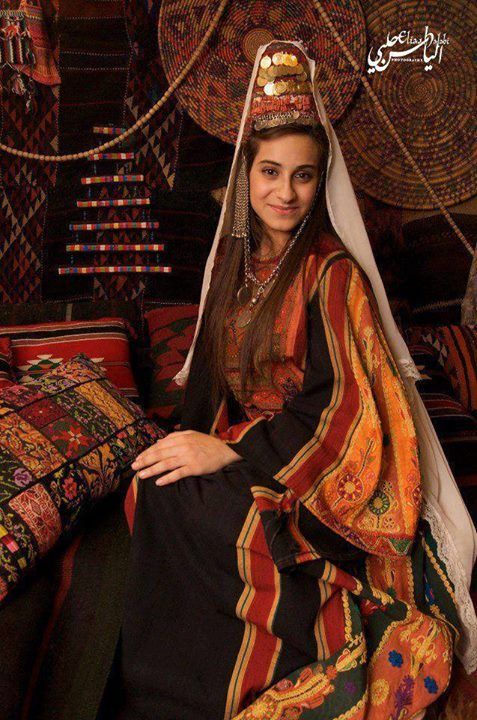
The early Bethlehem bridal Malak dress was made of silk and linen fabric with embroidered red, orange or yellow and green taffeta on the sleeves and side panels. The chest, sleeves, cuffs and side panels of the dress are embroidered in couching stitch (tahriri) using silver, gold and silk cords. On the sleeves, the center panel is usually red with yellow panel on each side, while on the side panel the center panel is green with a red panel on each side. The chest panel is densely couched with patterns mainly in gold cord that completely obscures the background material.
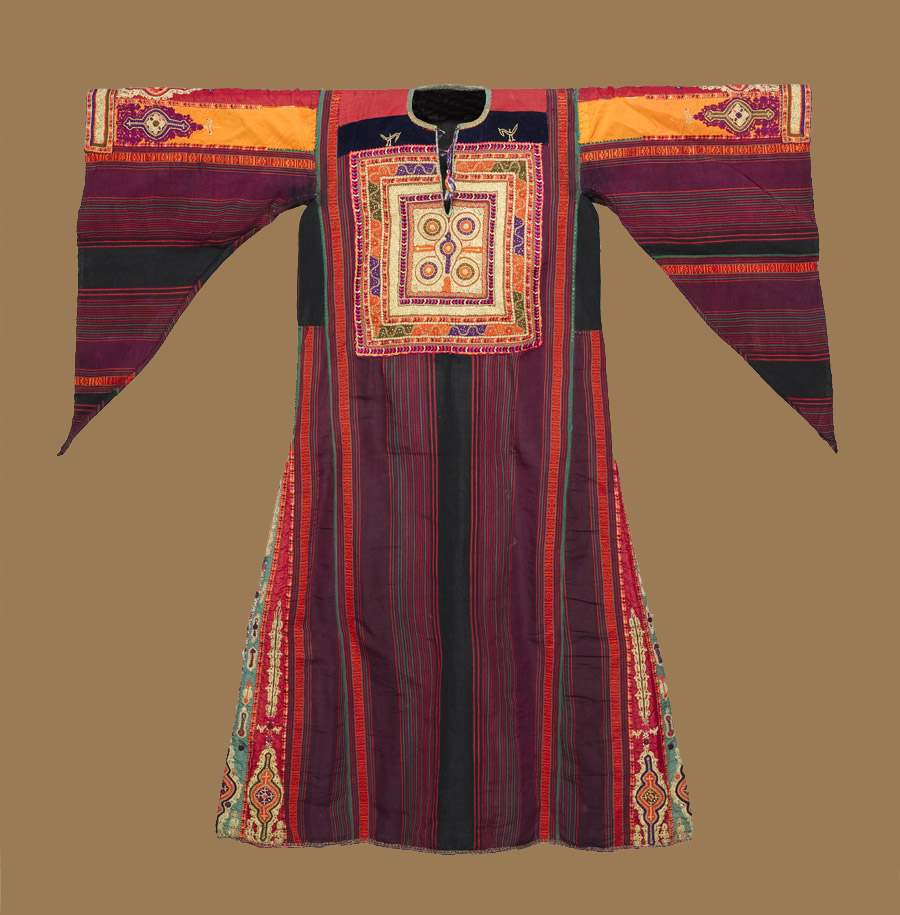
Every week I try to apply everything I learned to Palestinian embroidery, This is the first time I have known about the silver threads that conduct electricity, And I remembered that women used silver and gold threads in embroidery, and I thought that perhaps I could turn the part embroidered with these threads into e-textiles. At first, I tried to apply everything we had learned to an embroidery stitch called Qamar Bethlehem.
To get started, you need to know some definitions :¶
Circuit¶
is a closed path that consists of circuit components in which electrons from a voltage or current source
can flow. If the circuit consists of electric components like a resistor, a capacitor, an inductor etc.
then it will be called an Electrical circuit and if the circuit consists of any of the electronic
Circuit components like a diode, a Transistor etc. then it will be called an Electronic circuit. So,
the electronic circuits may consist both of the electrical and electronic circuit components, but
an electrical circuit will have only the electrical components.
soft circuits
Sensor:¶
In the broadest definition, a sensor is a device, module, machine, or subsystem whose purpose is to detect events or changes in its environment and send the information to other electronics, frequently a computer processor. A sensor is always used with other electronics.
actuators¶
Switch¶
In electrical engineering, a switch is an electrical component that can disconnect or connect the conducting path in an electrical circuit, interrupting the electric current or diverting it from one conductor to another.The most common type of switch is an electromechanical device consisting of one or more sets of movable electrical contacts connected to external circuits. When a pair of contacts is touching current can pass between them, while when the contacts are separated no current can flow
also You need to discover necessory materials, component, tools.¶
what sensor I made ?¶
Digital : switches / on_off /0110101110 Input: information or data that enters a system, like a botton press. Toggle switches: press, zip, slide, etc two pieces of conductive material together.These stay open in one position and closed in the other.
How do I program sensor behaviors ?¶
by using microcontrollers its a computers/HELLOWORLD designed to do different things like ARDUINO an open-source electronics prototyping platform.its a hardware and software. Boards ARDUINO : There are many different boards you can use for an e-textiles or werable project. the board you choose will depend one the functionality, form,and materials. I used Adafruit Gemma MO.
First:draw a diagram circuit to better undertand all the components needed to make the circuit,to see what a regular circuit would look like and then did a trial with a breadboard.
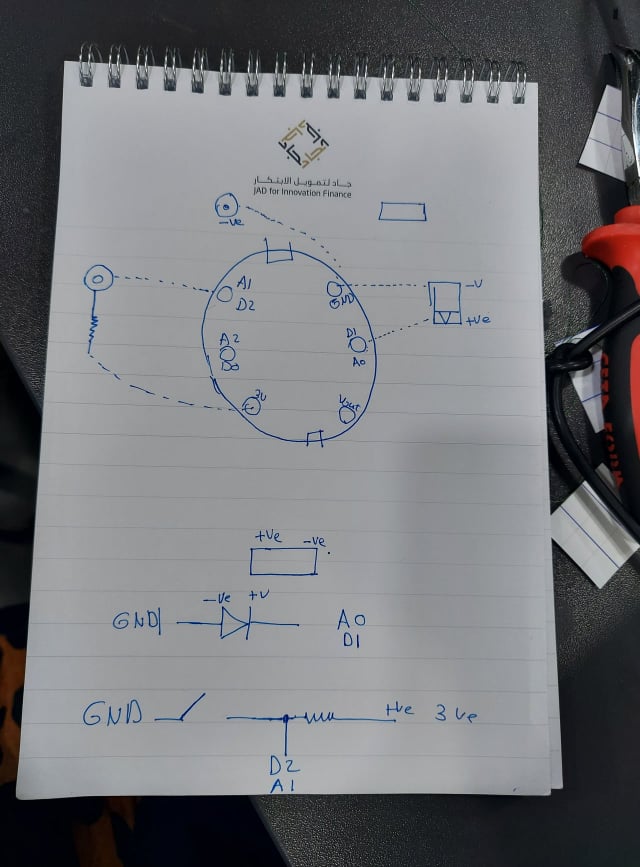
Second: make your first prototyp by following your drawing and remember its best to start your project with the Arduino Uno.
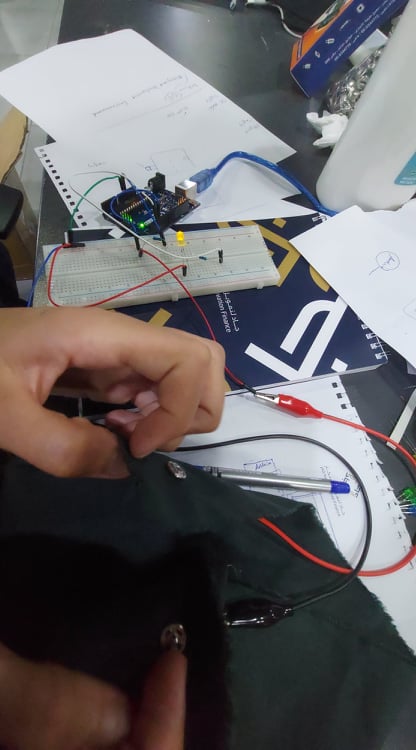
How I Embed electronics on fabrics?¶
circuit and it’s schematic¶
swatches¶
video of the swatches functioning¶
